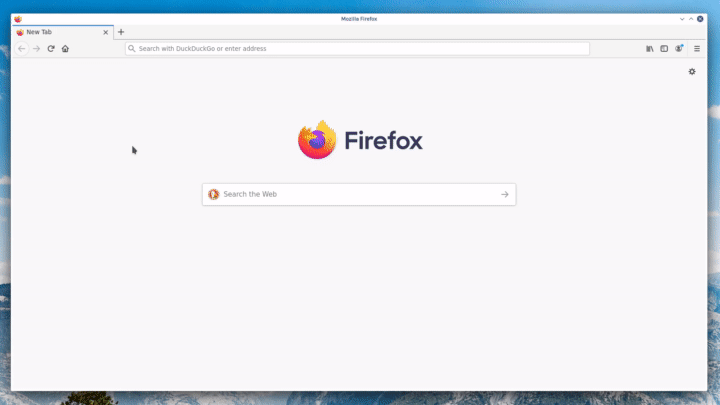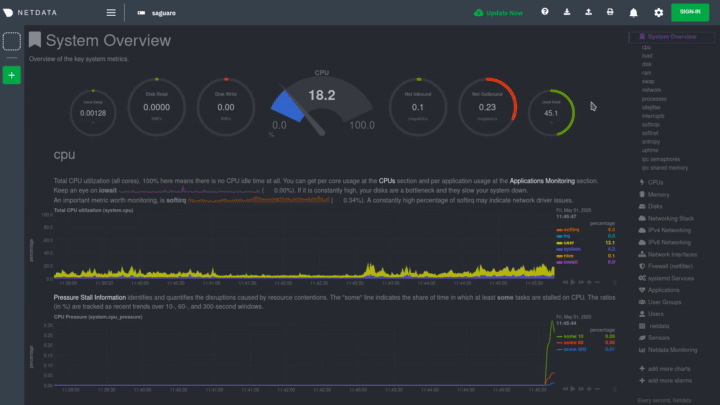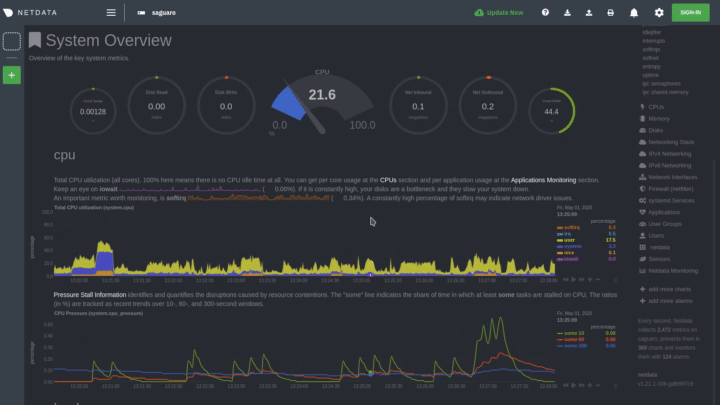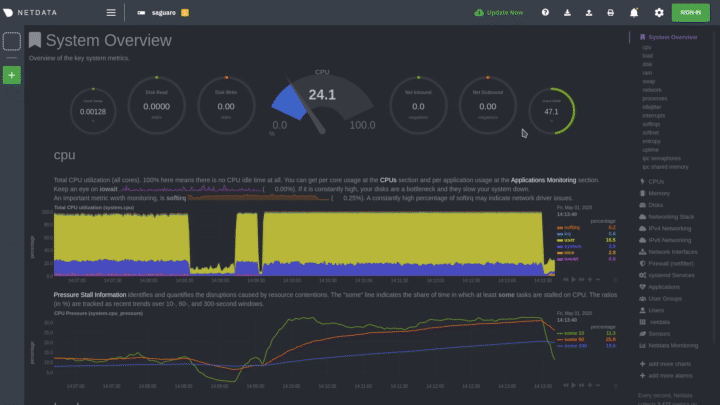How the dashboard works
Because Netdata is a monitoring and troubleshooting platform, a dashboard with real-time, meaningful, and context-aware charts is essential.
As soon as you install Netdata, it autodetects hardware, OS, containers, services, and applications running on your node and builds a dashboard on a single, scrollable webpage. This page features hundreds of charts, which are preconfigured to save you time from learning a query language, all stacked on top of one another. This vertical rhythm is designed to encourage exploration and help you visually identify connections between the metrics visualized in different charts.
It's essential to understand the core concepts and features of Netdata's dashboard if you want to maximize your Netdata experience right after installation.
Open the dashboard#
Access Netdata's dashboard by navigating to http://NODE:19999 in your browser, replacing NODE with either
localhost or the hostname/IP address of a remote node.

Many features of the internal web server that serves the dashboard are configurable, including the listen port, enforced TLS, and even disabling the dashboard altogether.
Sections and menus#
As mentioned in the introduction, Netdata automatically organizes all the metrics it collects from your node, and places them into sections of closely related charts.
The first section on any dashboard is the System Overview, followed by CPUs, Memory, and so on.
These sections populate the menu, which is on the right-hand side of the dashboard. Instead of manually scrolling up and down to explore the dashboard, it's generally faster to click on the relevant menu item to jump to that position on the dashboard.
Many menu items also contain a submenu, with links to additional categories. For example, the Disks section is often separated into multiple groups based on the number of disk drives/partitions on your node, which are also known as a family.

Charts#
Every chart in the Netdata dashboard is fully interactive. Netdata synchronizes your interactions to help you understand exactly how a node behaved in any timeframe, whether that's seconds or days.
A chart is an individual, interactive, always-updating graphic displaying one or more collected/calculated metrics, which are generated by collectors.

Hover over any chart to temporarily pause it and see the exact metrics values presented as different dimensions. Click or tap to stop the chart from automatically updating with new metrics, thereby locking it to a single timeframe. Double-click it to resume auto-updating.
Let's cover two of the most important ways to interact with charts: panning through time and zooming.
To pan through time, click and hold (or touch and hold) on any chart, then drag your mouse (or finger) to the left or right. Drag to the right to pan backward through time, or drag to the left to pan forward in time. Think of it like pushing the current timeframe off the screen to see what came before or after.
To zoom, press and hold Shift, then use your mouse's scroll wheel, or a two-finger pinch if you're using a touchpad.
See interact with charts for all the possible ways to interact with the charts on your dashboard.
Alarms#
Many of the preconfigured charts on the Netdata dashboard also come with preconfigured alarms. Netdata sends three
primary alarm states via alarms: CLEAR, WARNING, and CRITICAL. If an alarm moves from a CLEAR state to either
WARNING or CRITICAL, Netdata creates a notification to let you know exactly what's going on. There are other alarm
states as well.
The easiest way to see alarms is by clicking on the alarm icon
in the top panel to open the alarms panel, which shows you all the active alarms. The other All tab shows every
active alarm, and the Log tab shows a historical record of exactly when alarms triggered and to which state.

Learn more about viewing active alarms, configuring alarms, or enabling a new notification method.
What's next?#
Learn more about interacting with charts to quickly pan through time, zoom, and show/hide dimensions to best understand the state of your node in any timeframe. A complete understanding of chart dimensions, contexts, and families will also help with how Netdata organizes its dashboard and operates alarms.